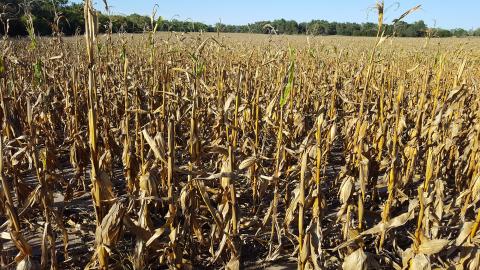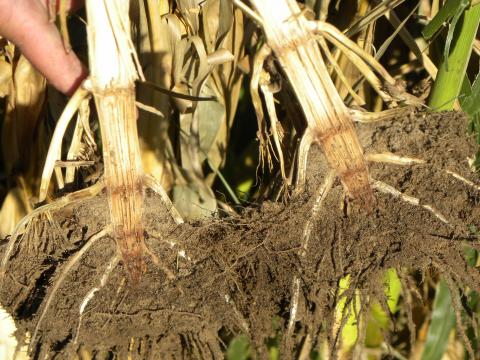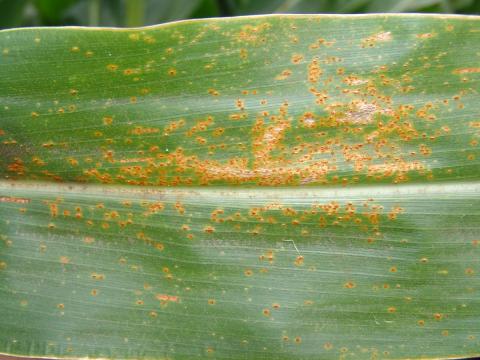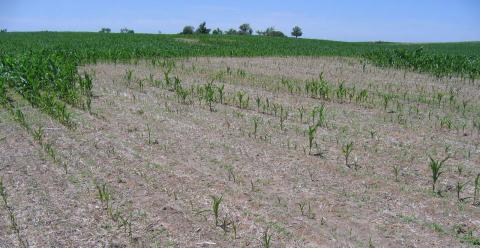Scouting for Stalk and Ear Rot Diseases
September 29, 2016
Stalk rot diseases are increasing in corn, causing top die-back in a number of fields, and ear rot diseases are developing in some fields. Scout fields now to help determine the need for any adjustments in your harvest management.
Stalk Rot Diseases Including Anthracnose Top Dieback Developing in Some Fields
September 9, 2016
While most of the Nebraska corn crop looks good, there is early evidence of developing stalk and crown rot diseases, including Anthracnose top dieback. Producers are encouraged to scout their fields for disease and prioritize those fields for harvest where lodging may become an issue.
Bacterial Leaf Streak of Corn Confirmed in Nebraska, Other Corn Belt States
August 26, 2016
Bacterial leaf streak disease of corn, caused by Xanthomonas vasicola pv. vasculorum, has now been confirmed in multiple Corn Belt states. First identified in Nebraska, the bacterial disease has symptoms similar to other corn diseases, such as gray leaf spot, but is managed differently.
Corn Ear Formation Issues Likely Correlated With the Loss of the Primary Ear Node
August 19, 2016
UNL agronomists and educators responding to grower questions surveyed a number of corn fields this week and found a range of corn ear issues: short husks, dumbbell-shaped ears, and multiple ears per node. The article describes and discusses the situation, potential stress agents, and the development of corn. It also encourages growers to check their fields pre-harvest to better assess causes of potential yield loss.
Corn Disease Update: Southern Rust Confirmed in 10 Nebraska Counties
July 29, 2016
Southern rust has been confirmed in samples from 10 Nebraska counties — Adams, Butler, Clay, Fillmore, Lancaster, Nuckolls, Pierce, Polk, Thayer, and Valley. All were from fields with a low incidence of disease at the time. Growers should also be scouting for rust as well as gray leaf spot, common rust, and physoderma brown spot.
Corn Disease Updates Aug. 4-5; Samples Welcomed
July 28, 2016
Corn Disease Updates, hosted by Nebraska Extension and sponsored by the Nebraska Corn Board, will be held at three more sites in the next two weeks.
Corn Nematodes: Scout Sandy Soils Now, Other Soils Any Time
June 7, 2016
This year nematode damage in some Nebraska fields may be masked by the ample rainfall we’ve received, but rest assured, these plant parasitic nematodes are still there in almost every field. Their impact ranges from no obvious sign to severe crop injury and tremendous yield loss.
Seedling Diseases Continue to Develop in Nebraska Corn
June 2, 2016
Following several weeks of rainy conditions, seedling diseases are becoming more apparent in corn. See what symptoms to look for when scouting fields.








